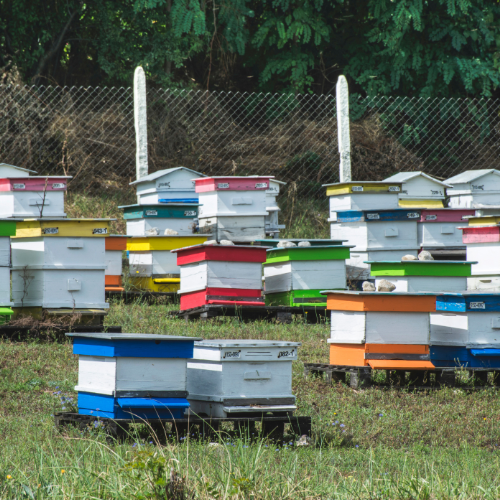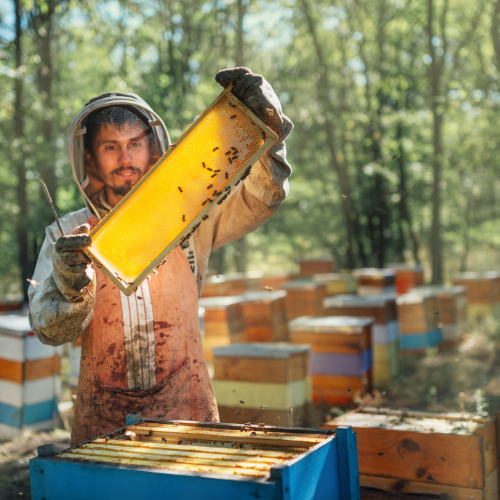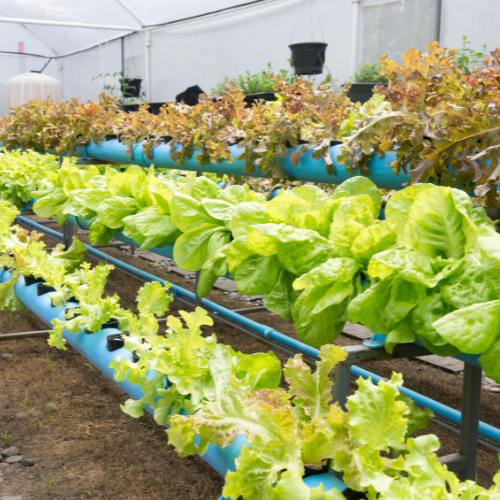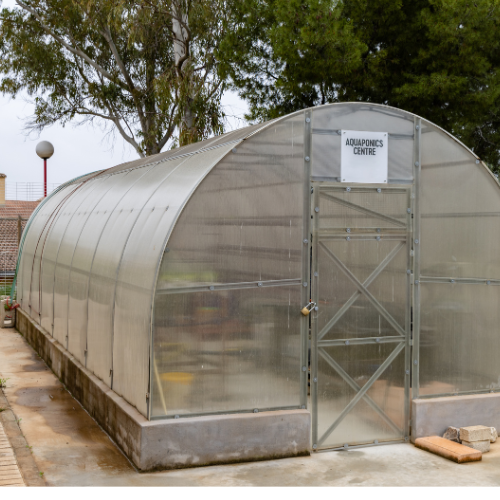In recent years, the interest in sustainable agriculture and local food production has surged as consumers become more conscious of where their food comes from. This shift presents a unique opportunity for aspiring entrepreneurs to venture into the agricultural sector with innovative ideas that can thrive even in urban settings. In this article, we will explore five promising agricultural business concepts: urban farming, organic herb gardening, community supported agriculture (CSA), beekeeping, and aquaponics. Each of these initiatives not only supports sustainable practices but also offers immense potential for profitability.
1. Urban Farming: Starting a Vertical Garden Business in Your Backyard.
Understanding Urban Farming.
Urban farming has emerged as a dynamic response to the challenges of food production in densely populated areas. By utilizing limited space efficiently, urban farmers are able to grow a variety of crops, from vegetables to fruits, herbs, and even flowers. Vertical gardening, in particular, maximizes space by allowing plants to grow upward rather than outward, making it ideal for small backyards or even balconies.
Benefits of Urban Farming.
- Fresh Produce: Urban farming provides access to fresh, organic produce without the need for long supply chains.
- Community Engagement: Urban farms can foster community spirit and encourage residents to participate in local food initiatives.
- Environmental Impact: These farms can help reduce the urban heat island effect and improve air quality.
How to Start an Urban Farming Business.
- Research Local Regulations: Check zoning laws and regulations regarding urban farming in your area.
- Choose Your Crops: Select crops that are well suited for vertical gardening, such as leafy greens, strawberries, or herbs.
- Set Up Your Garden: Invest in vertical gardening systems, such as wall planters, hydroponics, or container gardens.
- Market Your Produce: Utilize social media and local farmer’s markets to promote your fresh offerings. Consider starting a subscription service for regular deliveries.

Case Study: Urban Farm Success.
Take the example of GreenSky Urban Farm in Chicago, which began as a small backyard project. By implementing vertical gardening techniques, they now supply local restaurants and farmers’ markets with fresh produce. Their community engagement initiatives, including workshops and farm tours, have helped raise awareness about sustainable practices and fostered a loyal customer base.
2. Organic Herb Gardening: Growing and Selling Fresh Herbs to Local Markets.
The Rise of Organic Herbs.
Organic herbs are in demand as consumers seek fresh, chemical free ingredients for cooking and health benefits. Starting an organic herb garden allows entrepreneurs to tap into this lucrative market while promoting sustainable practices.
Benefits of Organic Herb Gardening.
- High Market Value: Fresh herbs can command premium prices at farmers’ markets and grocery stores.
- Low Space Requirement: Herbs can be grown in small spaces, making them ideal for urban settings.
- Health Benefits: Organic herbs are known for their medicinal properties, appealing to health conscious consumers.
How to Start an Organic Herb Gardening Business.
- Select Your Herbs: Choose popular herbs such as basil, cilantro, mint, or rosemary that are sought after by local chefs and home cooks.
- Create a Growing Plan: Establish a planting schedule, focusing on growing seasons and crop rotation for optimal yields.
- Utilize Organic Practices: Use organic seeds, compost, and natural pest control methods to maintain an organic certification.
- Connect with Local Buyers: Reach out to local restaurants, grocery stores, and farmers’ markets to establish relationships and sell your herbs.
Case Study: Herb Garden Triumph.
Consider the story of Herb Haven, a small herb farm in Oregon that began with just a few pots on a balcony. By focusing on organic practices and building connections with local restaurants, they expanded into a full fledged herb farm. Their commitment to quality and sustainability has garnered them a loyal customer base, leading to a thriving business that now supplies multiple outlets.

3. Community Supported Agriculture (CSA): Connecting Local Farms with Fresh Produce Subscribers.
What is CSA?
Community Supported Agriculture (CSA) is a model that allows consumers to subscribe to receive regular deliveries of fresh produce from local farms. This initiative builds a direct relationship between farmers and consumers, ensuring that local agriculture thrives while providing fresh food to the community.
Benefits of CSA.
- Guaranteed Income for Farmers: CSA subscriptions provide farmers with upfront capital to cover growing costs.
- Seasonal Produce: Customers receive a variety of seasonal produce, encouraging them to explore new recipes and cooking methods.
- Community Building: CSA fosters a sense of community and shared responsibility for supporting local agriculture.

How to Start a CSA Business.
- Build Relationships with Local Farmers: Collaborate with local farms to curate a diverse selection of produce for your CSA.
- Determine Subscription Models: Offer various subscription levels, such as weekly or bi weekly deliveries, to cater to different consumer needs.
- Marketing and Outreach: Promote your CSA through social media, local events, and community boards to attract subscribers.
- Engage with Subscribers: Provide newsletters with recipes, farm updates, and tips for using seasonal produce.
Case Study: CSA Growth Story.
A successful example is the Farm Fresh CSA in Vermont, which started with just a handful of subscribers. By emphasizing the importance of local food systems and providing excellent customer service, they grew their subscriber base to over 300 families in just a few years. Their focus on community engagement and education has strengthened their business and solidified their reputation.
4. Beekeeping for Beginners: Producing and Selling Honey from Home.

The Buzz About Beekeeping.
Beekeeping, or apiculture, is an increasingly popular agricultural venture, especially for those interested in sustainability and environmental conservation. Honey production can be a rewarding business, providing a natural sweetener that is highly sought after.
Benefits of Beekeeping.
- High Demand for Honey: Consumers are increasingly seeking local, raw honey for its health benefits and unique flavors.
- Pollination Services: Beekeepers can offer pollination services to local farms, enhancing crop yields.
- Biodiversity Support: Beekeeping promotes biodiversity and supports the health of local ecosystems.
How to Start a Beekeeping Business.
- Educate Yourself: Take beekeeping classes or workshops to learn the fundamentals of hive management and honey production.
- Acquire Equipment: Invest in essential beekeeping equipment, such as hives, protective gear, and tools.
- Start with a Few Hives: Begin with a manageable number of hives and expand as you gain experience.
- Market Your Honey: Sell your honey at farmers’ markets, local stores, or online. Consider creating unique products like flavored honey or beeswax candles.
Case Study: Honey Harvest Success.
Take the example of Sweet Buzz Apiaries, founded by a couple who started beekeeping as a hobby. They began with two hives and focused on producing high quality, raw honey. Through social media marketing and participation in local events, they quickly grew their business and now supply honey to local grocery stores and restaurants, as well as selling directly to consumers.

5. Aquaponics Adventure: Creating a Sustainable Fish and Vegetable Farm in Your Basement.

Understanding Aquaponics.
Aquaponics is a sustainable farming method that combines aquaculture (raising fish) and hydroponics (growing plants in water) in a symbiotic environment. This system allows for efficient use of space and resources, making it suitable for urban settings.

Benefits of Aquaponics.
- Resource Efficiency: Aquaponics systems use significantly less water than traditional farming methods.
- No Soil Required: Ideal for urban areas where space is limited and soil quality may be poor.
- Fresh Produce and Fish: Provides a dual source of food, offering both vegetables and fish for consumption.
How to Start an Aquaponics Business.
- Research Aquaponics Systems: Explore different systems, such as media based, nutrient film technique, or deep water culture.
- Design Your Setup: Create a plan for your aquaponics system, considering space, fish types, and plant varieties.
- Choose Your Fish and Plants: Select fish that are suitable for aquaponics, such as tilapia or catfish, and plants like lettuce, herbs, or peppers.
- Maintain Your System: Monitor water quality, fish health, and plant growth to ensure a thriving aquaponics ecosystem.
Case Study: Aquaponics Innovation.
Consider the story of Urban Aqua, a basement aquaponics farm in a major city. By utilizing a compact setup, they successfully grew vegetables and raised fish for local restaurants. Their innovative approach to sustainable farming caught the attention of food bloggers and local media, leading to increased demand for their products and a growing customer base.

Conclusion.
The agricultural landscape is ripe with opportunities for aspiring entrepreneurs. By exploring innovative ideas like urban farming, organic herb gardening, community supported agriculture, beekeeping, and aquaponics, individuals can cultivate successful businesses that not only generate income but also contribute to sustainable practices. These initiatives promote local food systems, foster community connections, and support environmental stewardship.Starting an agricultural business may seem daunting, but with passion, creativity, and a commitment to learning, anyone can become a successful small business owner in this thriving sector.
FAQs:
1.What is the startup cost for urban farming?
Startup costs can vary widely depending on the scale of your operation and the crops you choose. A small backyard garden can start with just a few hundred dollars, while larger setups may require more investment in equipment and infrastructure.
2.How can I ensure my herb garden is organic?
To maintain organic status, use organic seeds, avoid synthetic pesticides and fertilizers, and follow organic gardening practices. Consider implementing crop rotation to enhance soil health and prevent pest buildup. Additionally, utilize natural pest control methods, such as introducing beneficial insects like ladybugs or using neem oil, which is derived from the seeds of the neem tree. Regularly amend your soil with organic compost to provide essential nutrients and improve soil structure. Engaging in practices like mulching can help retain moisture and suppress weeds, further supporting the health of your herb garden. By adhering to these principles, you can ensure that your herb garden remains organic and thriving.
3.How can I effectively market my CSA to attract subscribers?
Effective marketing of your CSA can be achieved through various channels. Utilize social media platforms to showcase your produce and share recipes. Attend local farmers’ markets and community events to engage directly with potential subscribers. Additionally, consider offering trial memberships or discounts for first time customers to encourage sign ups.
4.What are the best fish to raise in an aquaponics system?
The best fish for aquaponics often include tilapia, catfish, trout, and goldfish, depending on your local climate and regulations. Tilapia is a popular choice due to its hardiness and fast growth rate. It’s important to research local fish farming regulations and choose species that are suitable for your environment and market.
5.What are the legal requirements for starting a beekeeping business?
Legal requirements for beekeeping vary by location, so it’s crucial to check local regulations. Many areas require registration of beehives with local agricultural departments. You may also need to comply with zoning laws and health regulations. Additionally, consider obtaining liability insurance and familiarizing yourself with best practices for bee management to ensure the health of your hives and safety for your community.
